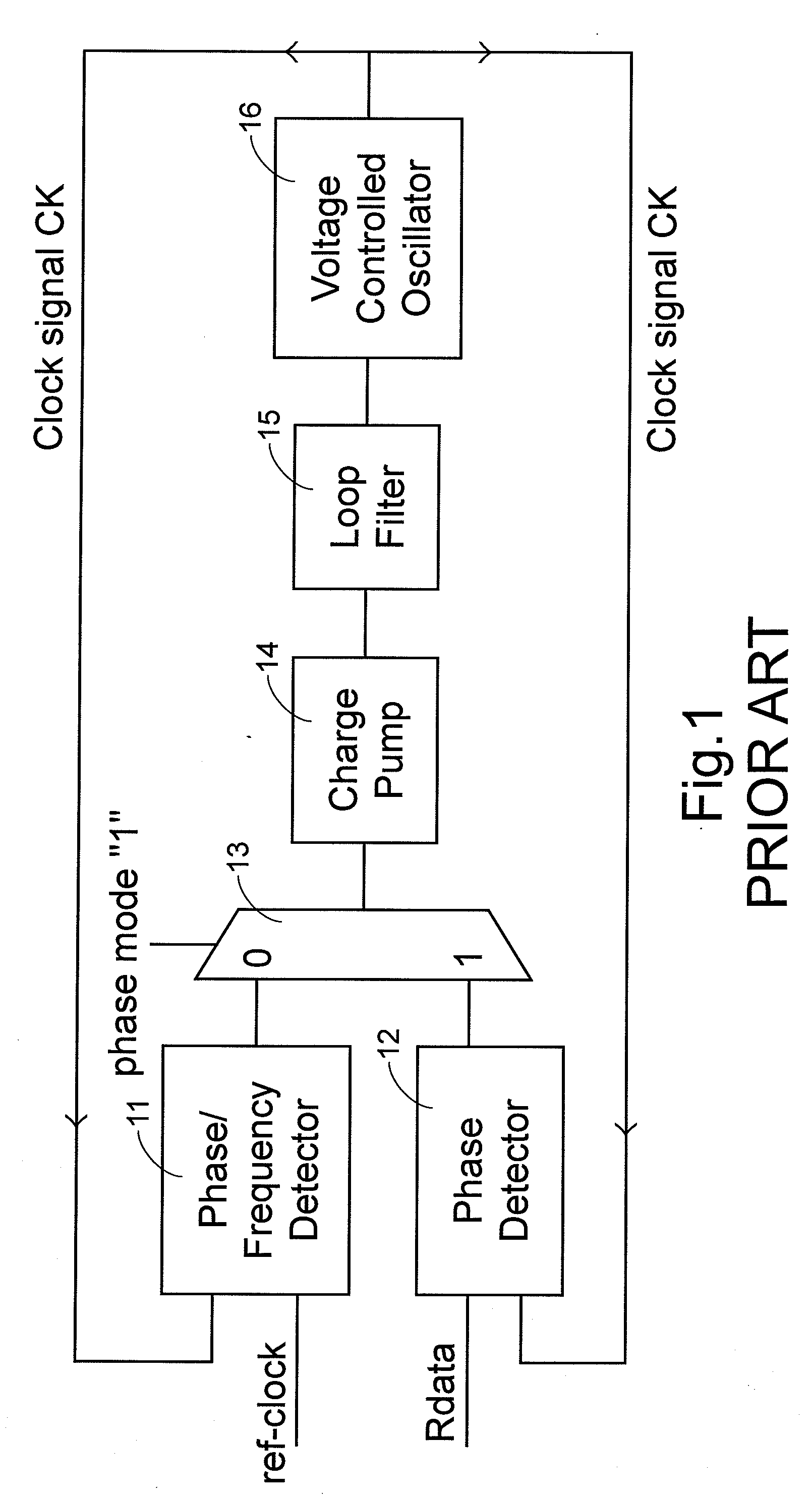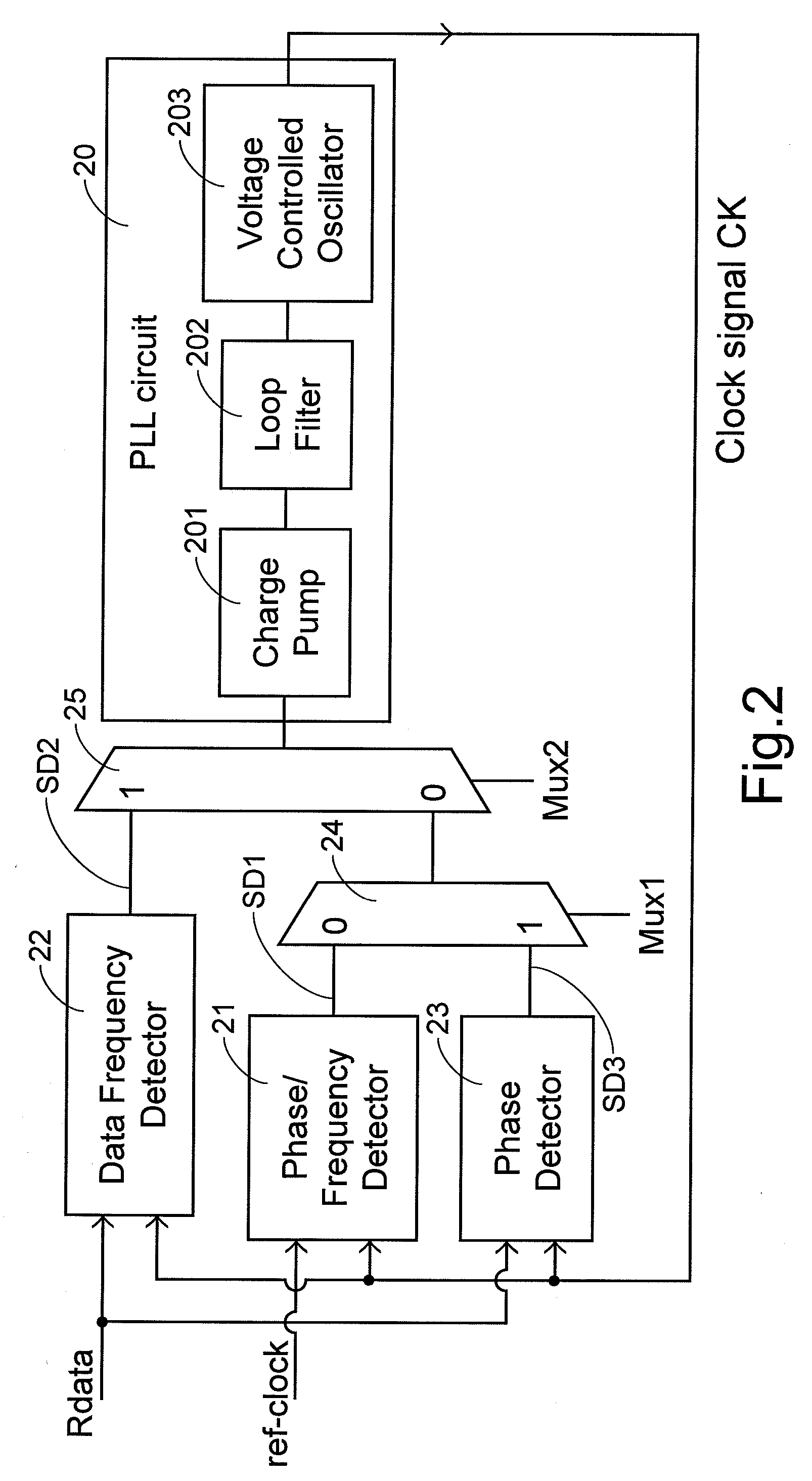Clock-signal adjusting method and device
a clock signal and clocksignal technology, applied in the direction of digital transmission, pulse automatic control, angle demodulation by phase difference detection, etc., can solve the problem of data lockout problem resulting from significant frequency difference, data rdata's frequency difference would be inevitable or unpredictable, etc. problem, to achieve the effect of solving the data lockout problem, and the frequency difference cannot be significan
- Summary
- Abstract
- Description
- Claims
- Application Information
AI Technical Summary
Benefits of technology
Problems solved by technology
Method used
Image
Examples
Embodiment Construction
[0017] A clock-signal adjusting device according to an embodiment of the invention includes a PLL circuit 20, a phase / frequency detector 21, a data frequency detector 22, a phase detector 23, a first multiplexer 24 and a second multiplexer 25, as illustrated in FIG. 2.
[0018] For adjusting both the frequency and phase of a clock signal Ck generated by the PLL circuit 20, a series of mode transitions are involved. First of all, the system enters a first mode. In the first mode, a first adjusting signal SD1 is generated by the phase / frequency detector 21 according to the frequency difference between a local reference clock ref-clock and the clock signal Ck. The frequency of the clock signal Ck less than that of the local reference clock ref-clock is increased in response to the first adjusting signal SD1, while the frequency of the clock signal Ck greater than that of the local reference clock is decreased. By repetitive feedback and adjustment of the clock signal Ck, the frequency of...
PUM
 Login to View More
Login to View More Abstract
Description
Claims
Application Information
 Login to View More
Login to View More - R&D
- Intellectual Property
- Life Sciences
- Materials
- Tech Scout
- Unparalleled Data Quality
- Higher Quality Content
- 60% Fewer Hallucinations
Browse by: Latest US Patents, China's latest patents, Technical Efficacy Thesaurus, Application Domain, Technology Topic, Popular Technical Reports.
© 2025 PatSnap. All rights reserved.Legal|Privacy policy|Modern Slavery Act Transparency Statement|Sitemap|About US| Contact US: help@patsnap.com



